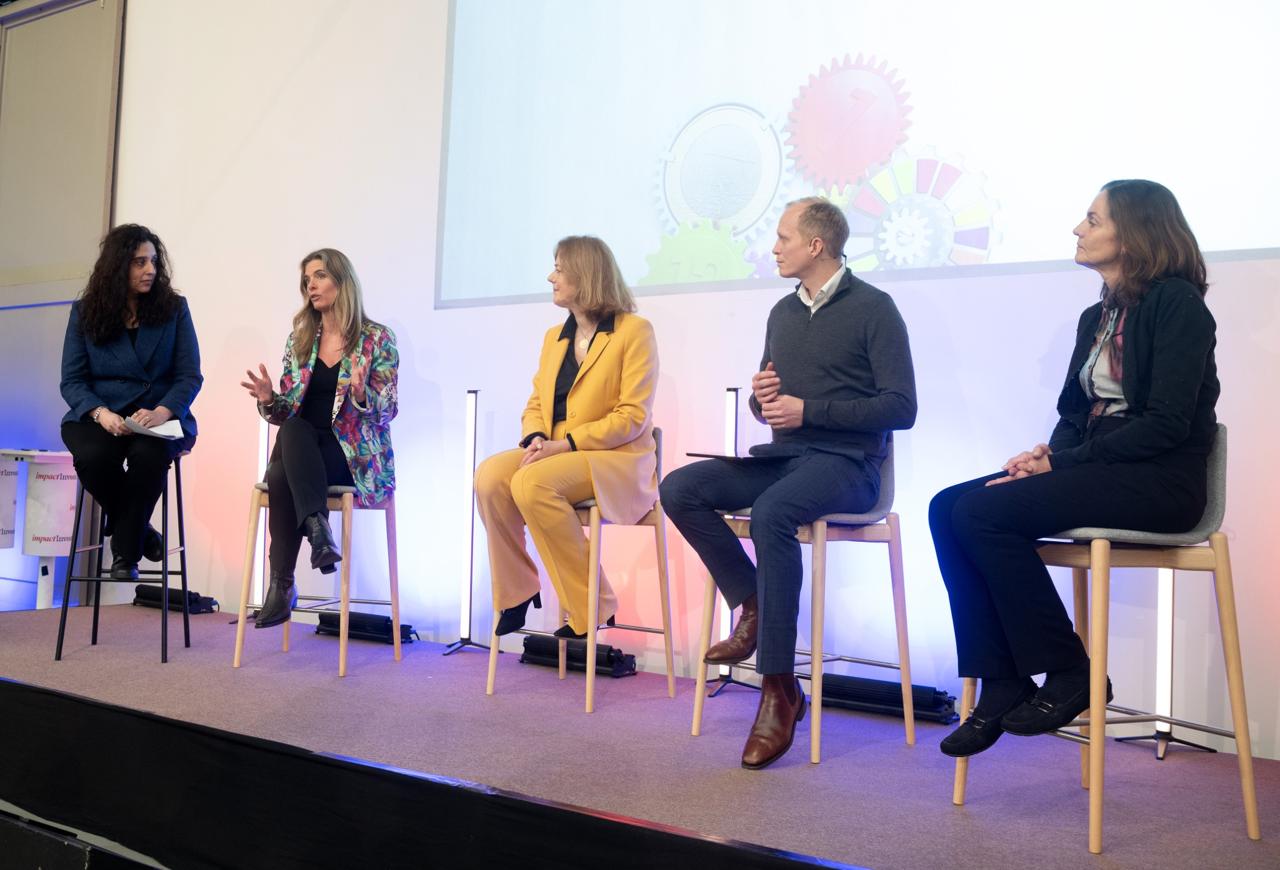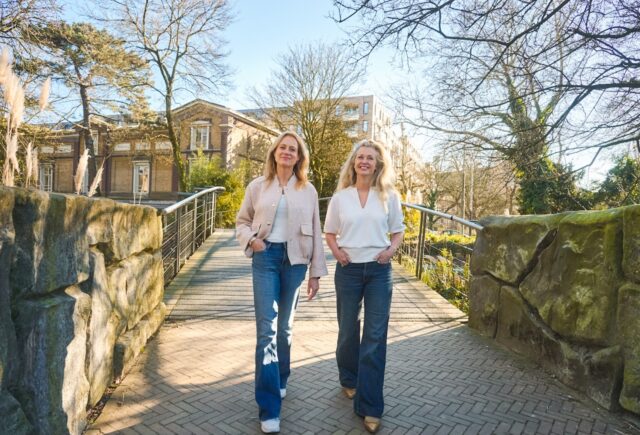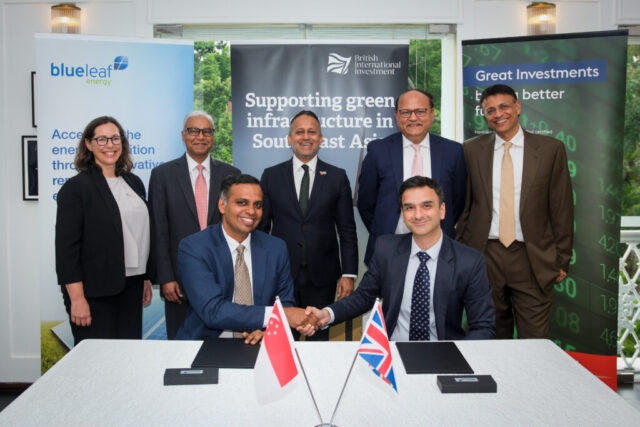At the Impact Investor Conference, industry experts focused on the opportunities, challenges, and considerations when it comes to integrating biodiversity and natural capital into investment portfolios.

Human society depends on healthy ecosystems, which are currently under threat due to the unprecedented erosion of the world’s biodiversity and nature reserves. As the global focus on sustainability intensifies, preserving biodiversity and natural capital has never been more critical, with investors being in a unique position to drive real change, according to speakers at the third Impact Investor Conference, which returned to The Hague on 13 November 2024. Industry experts shared their experiences of the challenges and opportunities posed by the biodiversity and natural capital sector.
The biodiversity growth opportunity
Making the case for the investment opportunities in biodiversity restoration and protection was Anna Väänänen, head of listed impact equity at AXA Investment Managers (AXA IM).
Currently, over 50% of global GDP depends on nature and its services, with natural ecosystem degradation costing the global economy a staggering $5trn (€4.7trn), said Väänänen.
However, the transition to a nature-positive economy provides opportunities to investors in companies offering inventive solutions to protect and restore biodiversity, she argued.
“We understand the importance of starting to act on stopping our negative impact on biodiversity, and even starting to turn that into a positive across a wide area of economic sectors,” Väänänen said.
Addressing delegates, Väänänen shared AXA IM’s biodiversity impact investment strategy, which focuses on minimising negative footprints, transitioning companies to improve their impact, and investing in companies developing technologies that positively impact biodiversity, such as precision agriculture.
“We want to identify leading companies who can execute and have developed proven technologies. So we are not investing in unproven technologies in a listing, but we are trying to find the global leaders who can really drive the change,” said Väänänen.
Biodiversity and natural capital panel
A panel discussion chaired by Impact Investor’s co-editor Maha Khan Phillips focused on the critical role of biodiversity and natural capital in investment landscapes, emphasising the need for urgent action.
Panellists Anita de Horde, co-founding executive director of Finance for Biodiversity Foundation (FfB), Jacqueline Duiker, senior manager at VBDO, Nick Moss, head of nature-based solutions at Nuveen Natural Capital and Anne Gram, board member of Planetary Responsibility Foundation and numerous pension funds, shared their experiences of investing to prevent further biodiversity and natural capital loss.
Discussions focused on how investors think about strategies and innovations, the approaches they are taking and the evolving regulatory and policy landscape that is affecting their decision-making.
Speaking on the importance of developing biodiversity measurement tools for investors, de Horde outlined an analysis carried out by the FfB on data availability and the impact of companies on nature. The results showed that a small group of 250 companies are causing 80% of the impact on nature, which de Horde argued makes it easier for investors to focus their engagement efforts.
“You cannot carry out engagement with stewardship activities on your entire portfolio, but if you focus on a couple of sectors and really look at companies and how they perform that can really support [engagement],” she said.
Following on from this, Gram told delegates that she became heavily involved in biodiversity engagement after conversations ten years ago with climate and biodiversity scientists and experts, which scared her.
“It was at this point that I realised I wanted to make a personal contribution,” Gram recounted.
Gram said she felt outside of the ‘real world’ within the financial sector, until realising it was possible to affect positive change through directing financial flows to sustainable strategies.
“So, I made that my personal mission, to be a sustainable agent of change in the financial sector,” Gram said.
One staggering, but actionable, revelation Gram shared was how just 39 companies are responsible for 85% of the degradation of the Brazilian rainforest and Indonesian peatlands, both of which are crucial for maintaining a healthy ecosystem.
Meanwhile, Nuveen’s Moss emphasised some of the substantial opportunities provided by nature-based solutions, as well as some of the risks and considerations for investors.
“We have done work to demonstrate that adding natural capital to a portfolio can support in delivering a net zero portfolio but, we’ve also started to look at how it can contribute to a nature positive portfolio as well, which is of interest to investors.”
Moss also highlighted some of the complexities around measurement, and also some of Nuveen’s own work around natural capital accounting.
“We believe natural capital accounting gives us the best opportunity to have a holistic overview of ecosystem services. We basically quantify in financial terms a range of values that ecosystems bring, and that’s been really critical in helping investors identify where the contributions from farmland and timberland assets are, but also where we need to improve and how improvements can contribute to overall value,” he said.
Jaqueline Duiker, senior manager at VBDO also shared various ways of directly engaging and working with the financial sector on biodiversity and responsible investment.
“We actually benchmark pension funds as to how well they perform when it comes to responsible investments,” Duiker said. VBDO has created and is creating a range of benchmarks, including one with PWC for listed companies.
Sustainable farming and forestry
Emphasising the need for a paradigm shift in agriculture, was Richard Jacobs, co-head of private markets at Van Lanschot Kempen Investment Management.
Jacobs spoke on how strategic investments and expert collaboration in regenerative farming can transform soil health, thereby driving sustainable agriculture and a more resilient future.
Highlighting the environmental and health impacts of modern farming practices, noting a 75% loss in soil nutrient density and the increased pollution of waterways, Jacobs spoke about his firm’s SDG Farmland fund, which targets biodiversity, climate, responsible consumption, and healthy food. Jacobs also explained how the fund follows a theory of change focused on healthy soil, animals, plants, and people.
“The farming industry, as it is today, is pretty much bankrupt and needs to really change,” said Jacobs.
“We have been locked into a system for seven decades that is basically coming to a halt. And farmers know this because they work on the soil and land day in and day out, and they know that something must change.” he added.
Returning to organic regenerative farming is essential to preserving our ecosystems and protecting our health, Jacobs added.
Looking at the importance of soil-health, Jacobs told the audience that topsoil contains the weight of five cows in microorganisms that do the work for us every day in producing our food.
“In order to achieve regeneration farming, we must create a system, which we used to have 100 years ago, where the soil feeds the plants,” said Jacobs.
Looking at the impact KPIs of regenerative farming, Jacobs said he and his team follow what he called the ‘the ten commandments’, such as ensuring they have 10% of their land in ecological beneficial zones.
Sustainable Forestry
Mirroring this theme was a presentation from Céline Claudon, chief commercial officer at International Woodland Company (IWC), part of BNP Paribas Asset Management, who spoke about the opportunities within sustainable forestry.
Stressing the fact that trees grow regardless of how global markets are performing, Claudon spoke about the main characteristics and impact of investing in timber. Furthermore, she shared how the demand for timber is driven by long-term structural mega trends including population growth, and increased urbanisation.
Low correlations, adjusted risk-return and its role as an inflation hedge are some of the key attributes to sustainable forestry, according to Claudon.
Looking at the sector’s sustainability credentials, she pointed to forests’ ability to sequester and store carbon, as well as the essential role of wood in the green transition, and how the management of sustainable forests results in the preservation and restoration of biodiversity.





